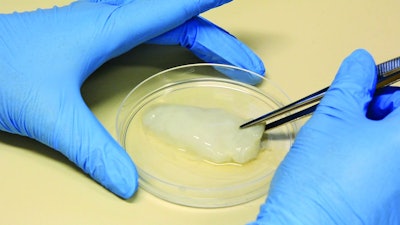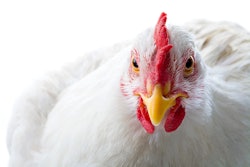
For a country that has built a world class chicken industry, pouring money into cultivated chicken breasts, might, at first glance, seem like an odd thing to do, but this is exactly what is happening in Brazil.
Laboratory grown chicken meat, in particular breast tenders, is the focus of a new project at the Brazilian Agricultural Research Corporation's (Embrapa) pig and poultry division, and it should be available for nutritional and sensorial analysis by the end of 2023.
Does this move represent a threat, albeit a small one, to an industry that generated almost US$9.8 billion in export revenue last year? Perhaps not, and here are a number of reasons why Embrapa is entering the field of cultivated chicken. The corporation points to, on the one hand, the forecast increase in global demand for meat, while on the other, it notes that consumers’ eating habits are changing.
In the face of these changes, it says that the scientific community has woken up to concerns about sustainability and the need to broaden the technology available to ensure food supply.
Making cultivated meat available can help to reduce the impact on the environment as demand for meat grows, and it can also help in reducing the use of antimicrobials. Cultivated chicken, Embrapa notes, is not a replacement for traditional production, rather it should be seen as a complement
According to lead researcher with the project Vivian Feddern, the topic of laboratory grown meat has been discussed for some time, but it is only now that scale-up is happening due to technology becoming more viable; and, as a consequence, investment is increasing.
She continues that, for Embrapa, the reasons for investing are obvious and that the corporation will be able to offer its technology, or alternative proteins, to companies in Brazil and to countries that currently import livestock products.
Why chicken?
Embrapa has chosen to work with chicken meat given that it is versatile, consumed nationwide and is one of the most nutritionally complete foods, but also because it has access to its own poultry genetics bank. The corporation is looking to deliver a structured product, rather than an unstructured product such as meat for use in hamburgers, however, should its work prove successful, both will be possible.
For its chicken tenders, the corporation is developing three-dimensional nanocellulose structures that have been developed by the Federal University of Santa Catarina. These structures will have characteristics similar to decellularized chicken breasts that will be used to support cell cultivation.
While fewer studies have been carried out for chicken than for beef, Feddern notes, significant efforts have already been made in this area.
Legal framework changing
In most countries legislation has failed to keep pace with changes in technology, and Brazil is no exception. However, in 2021, the country’s Agriculture Ministry announced that it was working on what is called a national alternative proteins plan. Due for completion this year, the plan will cover not only cultivated meat, but also food and ingredients that comprise plants, insects, fungi and algae, produced via traditional or new methods.
Traditional companies entering new space
Feddern points out that some local companies are already investing in cultivated meat products, pointing to food and meat processing giants BRF and JBS and cultured animal cell company Cellva Ingredients. The majority, however, are focused on non-structured products, such as hamburgers, which are different to a structured product such as a chicken breast.
State of play
The project is currently focusing on two distinct areas, developing optimized cultivation conditions for the nanocellulose-producing bacteria, resulting in a viable commercial line, and the other is producing the chicken analogue.
A biobank of chicken cell lines will need to be created to supply the market.
Researcher, Ana Paula Bastos, notes that a biobank would drastically reduce the need for repeated generation of primary cell cultures and would allow companies to work with stable, reproducible and consistent cell lines. There will be no issues in licensing these cell lines as Embrapa will be working with its own genetic material.

Will Brazilians accept cultivated chicken?
Chicken meat forms a central part of the Brazilian diet and overtook beef as the country’s most consumed meat more than a decade ago. Estimated per capita chicken meat consumption last year stood at 40.7 kg, according to the Organization for Economic Co-operation and Development, making it sixth highest in the world.
Where laboratory-grown chicken is concerned, Embrapa research has found that consumers are willing to try it and they see its development as positive. Nevertheless, Embrapa’s survey, conducted early last year, found that Brazilian consumers have worries about the safety of cultivated meat and doubts over its nutritional value, taste, texture and method of production.

















